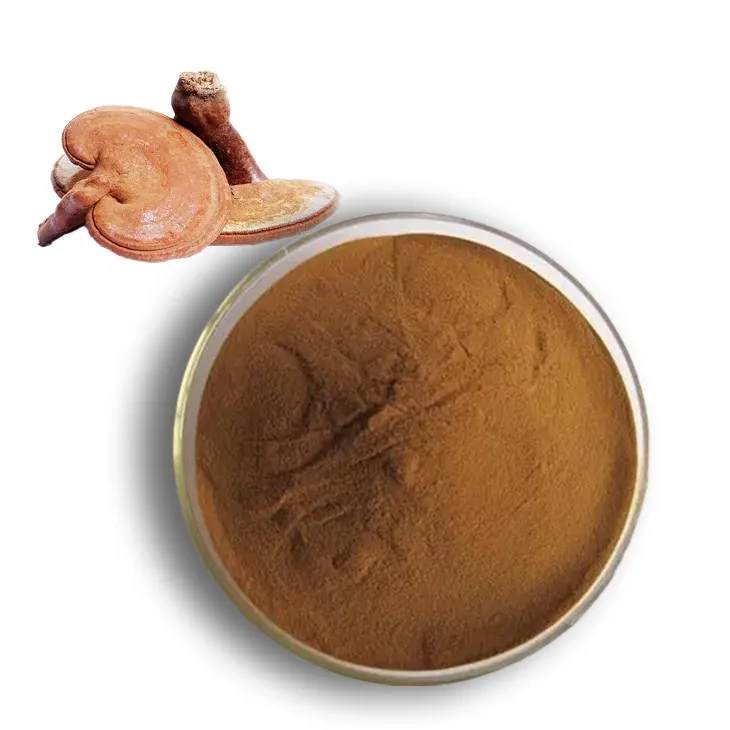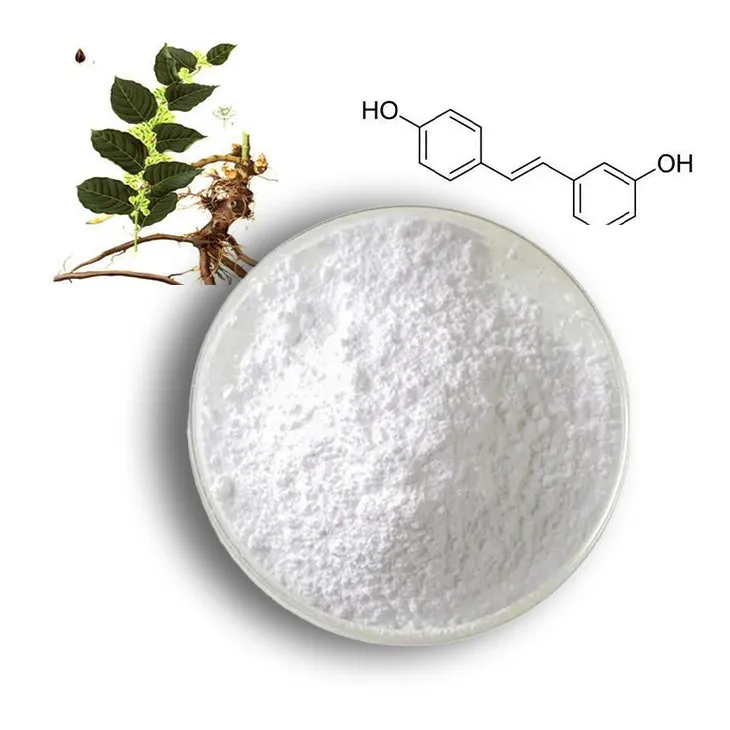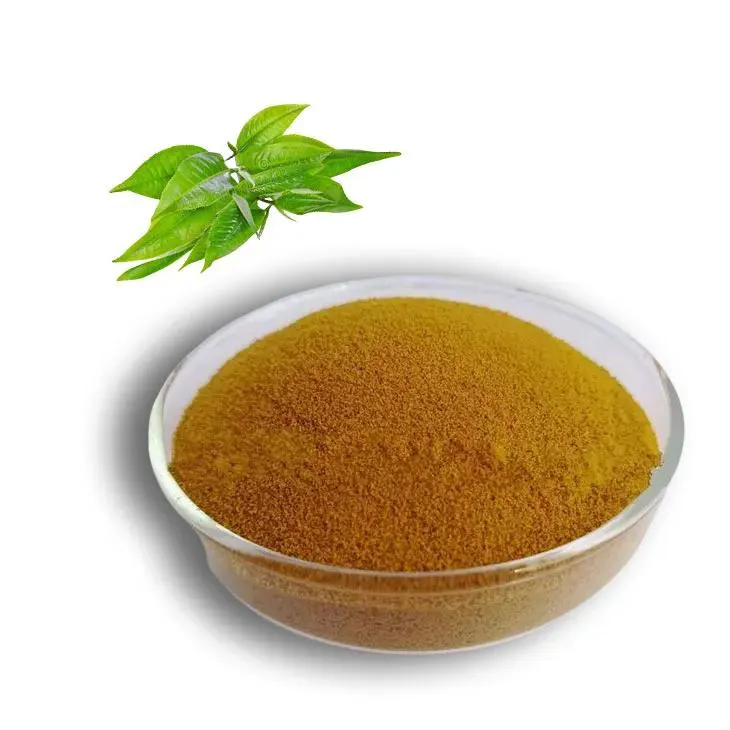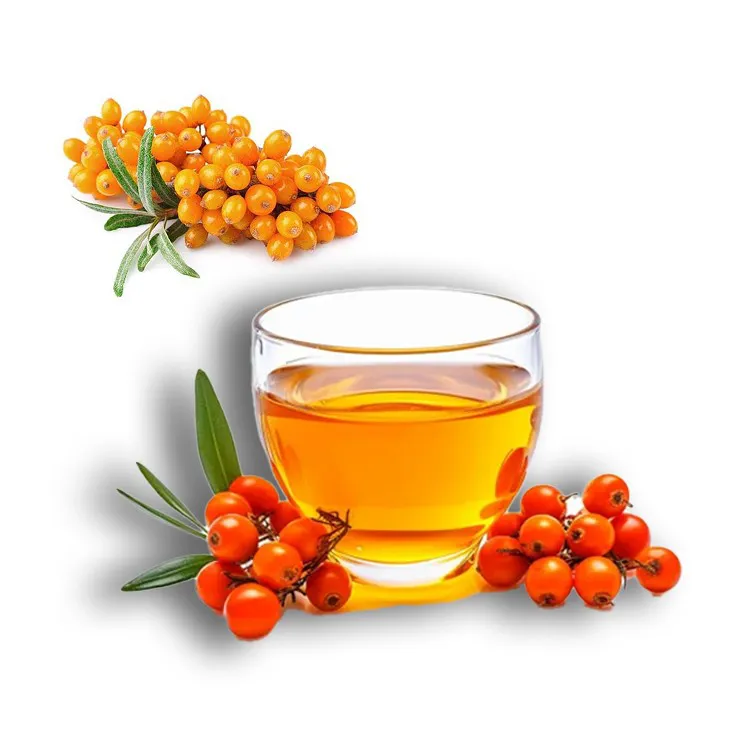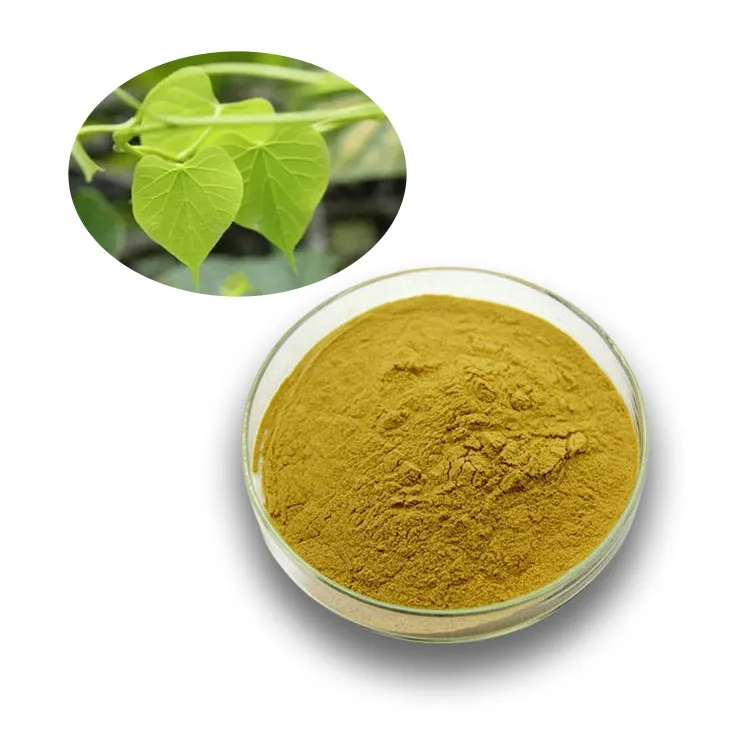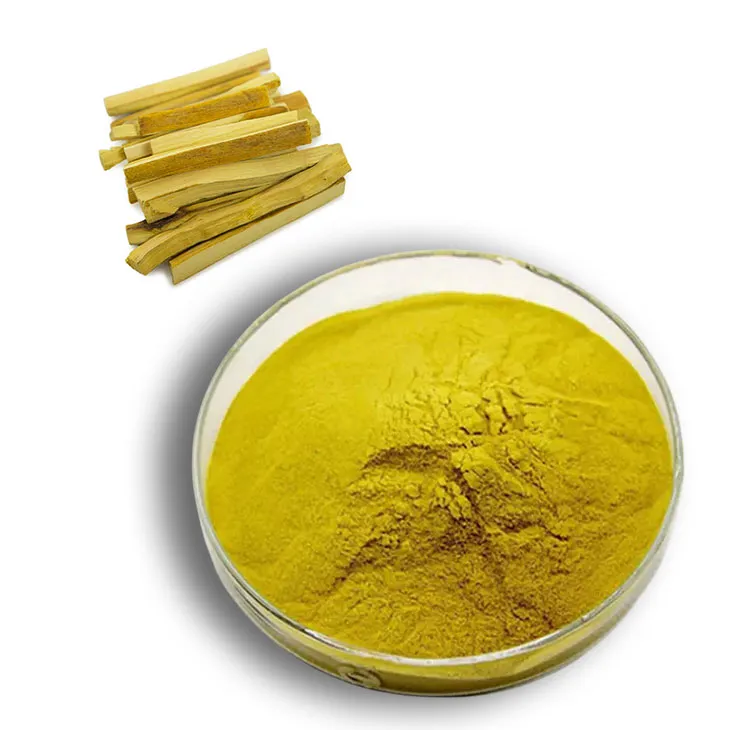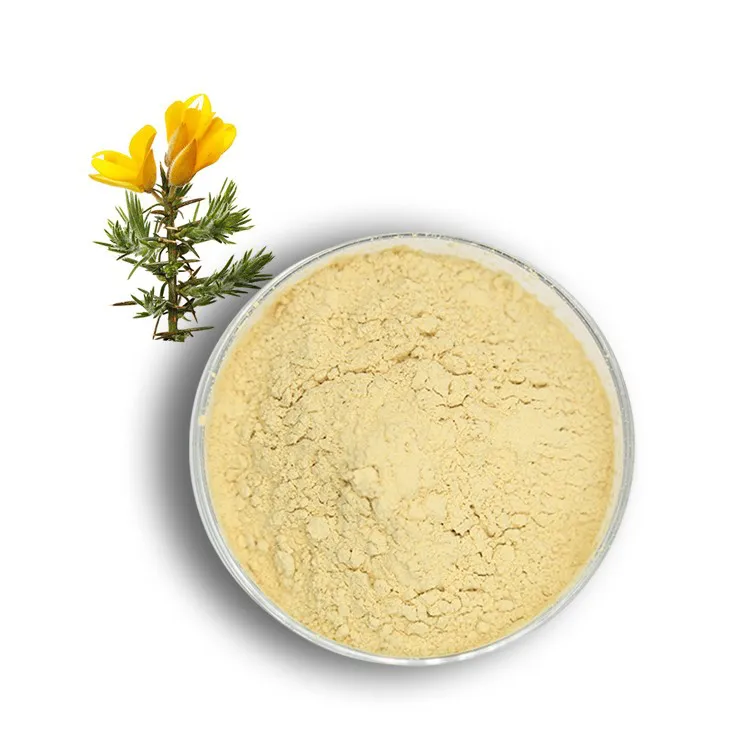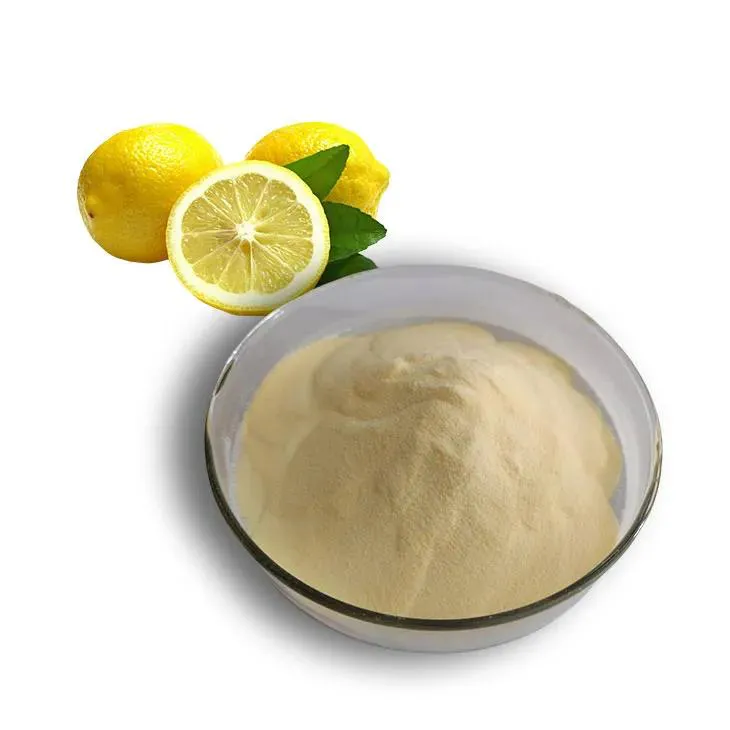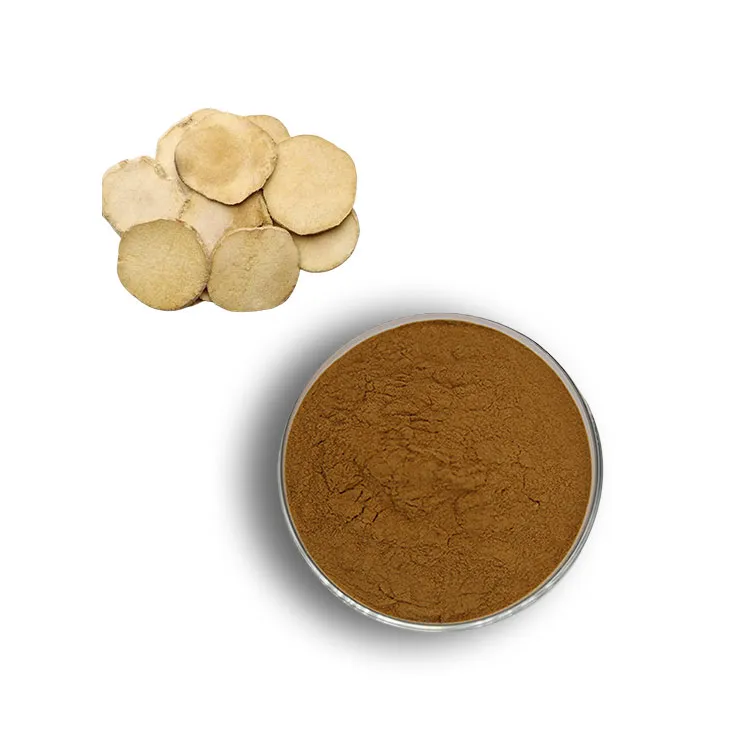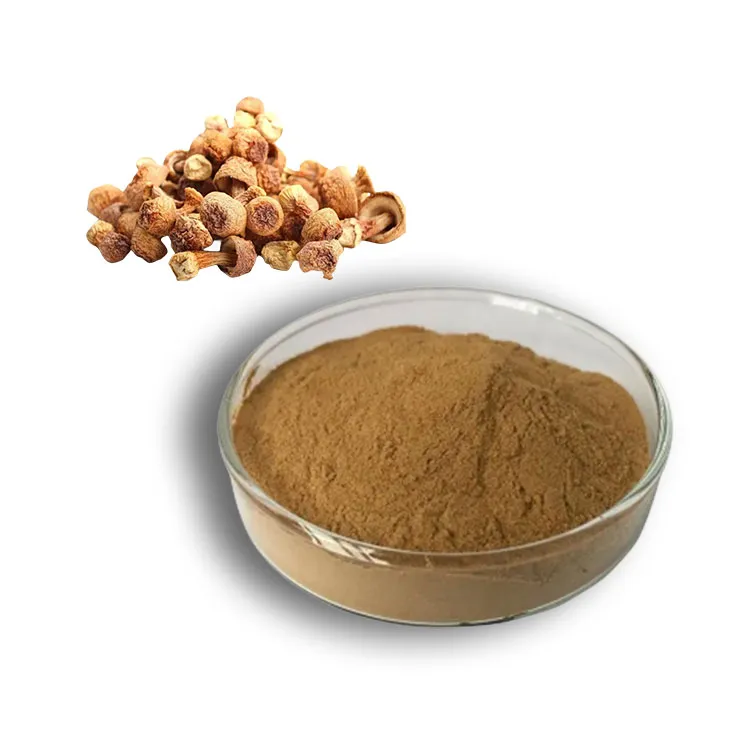- 0086-571-85302990
- sales@greenskybio.com
plant extract research
2023-09-26
1. Historical Perspective on Plant Extracts
1. Historical Perspective on Plant Extracts
The use of plant extracts dates back to the earliest civilizations, where plants were not only a source of food but also served as the primary means for treating various ailments. Ancient cultures, such as the Egyptians, Greeks, Romans, and Chinese, had a profound understanding of the medicinal properties of plants and incorporated them into their medical practices.
1.1 Ancient Civilizations and Plant Medicine
The historical perspective on plant extracts is rooted in the empirical knowledge of ancient civilizations. For instance, the Ebers Papyrus, an Egyptian medical document dating back to 1550 BCE, lists over 700 plant-based remedies. Similarly, the Sumerians and Assyrians documented their knowledge of medicinal plants on clay tablets, some of which are over 5,000 years old.
1.2 The Golden Age of Plant Medicine
The Greeks, particularly Hippocrates, are often referred to as the "Father of Medicine," who advocated the use of natural remedies, including plant extracts, to treat diseases. The Roman physician Galen further expanded on this knowledge, creating a comprehensive system of herbal medicine that was used for centuries.
1.3 Chinese and Ayurvedic Medicine
In the East, Chinese medicine has a long history of using plant extracts, with texts such as the "Shennong Bencao Jing" (The Divine Farmer's Materia Medica) dating back to 200 BCE. Ayurveda, the traditional Indian system of medicine, also has a rich history of using plant extracts for various health conditions.
1.4 The Middle Ages and Beyond
During the Middle Ages, the use of plant extracts continued, with monasteries often serving as centers for the cultivation and study of medicinal plants. However, the Renaissance period saw a decline in the use of herbal medicine due to the rise of more "scientific" approaches to medicine.
1.5 Revival and Modernization
The 19th and 20th centuries saw a resurgence of interest in plant extracts, with the development of modern pharmacology and the isolation of active compounds from plants, such as aspirin from willow bark and morphine from the opium poppy. This period also marked the beginning of systematic research into the medicinal properties of plants.
1.6 Current Status and Recognition
Today, plant extracts continue to play a significant role in modern medicine, with many pharmaceutical drugs derived from or inspired by natural plant compounds. Additionally, there is a growing interest in traditional and complementary medicine, leading to a renewed appreciation for the historical knowledge of plant extracts.
The historical perspective on plant extracts highlights the enduring significance of these natural resources in healthcare and underscores the importance of preserving and building upon the knowledge of our ancestors. As we delve deeper into the types of plant extracts and their uses, we will see how this rich history has shaped the current landscape of plant-based medicine and research.
2. Types of Plant Extracts and Their Uses
2. Types of Plant Extracts and Their Uses
Plant extracts are derived from various parts of plants, including leaves, roots, stems, flowers, seeds, and fruits. They are used in a wide range of applications, from traditional medicine to modern pharmaceuticals, cosmetics, and food products. Here, we explore the different types of plant extracts and their diverse uses.
2.1 Herbal Extracts
Herbal extracts are obtained from the whole plant or specific parts of the plant and are commonly used in traditional medicine. They are typically prepared by soaking plant material in a solvent, such as water or alcohol, to extract the active compounds. Herbal extracts are used for their therapeutic properties, including anti-inflammatory, analgesic, and antimicrobial effects.
2.2 Essential Oils
Essential oils are concentrated volatile extracts obtained from aromatic plant materials. They are used for their aromatic properties and are often used in aromatherapy, cosmetics, and perfumery. Essential oils also have antimicrobial, anti-inflammatory, and antioxidant properties, making them valuable in various health and wellness applications.
2.3 Tinctures
Tinctures are liquid extracts made by soaking plant parts in alcohol or another solvent. They are used for their medicinal properties and are often used as a form of herbal medicine. Tinctures are typically taken orally and can be used to treat a variety of conditions, including digestive issues, respiratory problems, and pain relief.
2.4 Phytochemicals
Phytochemicals are naturally occurring compounds found in plants that have biological activity in the body. They include a wide range of compounds, such as flavonoids, alkaloids, and terpenes. Phytochemicals are used in various health and wellness products, including dietary supplements, functional foods, and nutraceuticals.
2.5 Plant-Derived Pharmaceuticals
Some plant extracts have been developed into pharmaceutical drugs due to their potent bioactivity. For example, the alkaloid morphine, derived from the opium poppy, is used as a powerful painkiller. Plant-derived pharmaceuticals are used to treat a variety of conditions, including cancer, cardiovascular diseases, and neurological disorders.
2.6 Cosmetic and Skincare Ingredients
Plant extracts are widely used in the cosmetic and skincare industry for their beneficial properties, such as moisturizing, anti-aging, and soothing effects. They are used in various formulations, including creams, lotions, serums, and masks.
2.7 Food Additives and Flavorings
Plant extracts are used as natural food additives and flavorings to enhance the taste, aroma, and appearance of food products. They include spices, herbs, and other plant-derived compounds that are used to add flavor and color to various dishes.
2.8 Agricultural Applications
Plant extracts are also used in agriculture for their pest control and growth-promoting properties. They can be used as natural alternatives to synthetic pesticides and fertilizers, promoting sustainable farming practices.
2.9 Conclusion
The uses of plant extracts are vast and varied, reflecting the diverse properties of plants and their potential applications in various industries. As research continues to uncover the therapeutic and functional properties of plant extracts, their use in health, wellness, and other sectors is expected to expand further.
3. Methodologies in Plant Extract Research
3. Methodologies in Plant Extract Research
The methodologies in plant extract research encompass a wide range of scientific techniques and approaches aimed at identifying, isolating, and understanding the bioactive components present in plants. These methods are crucial for the development of new drugs, dietary supplements, and other health-related products derived from natural sources. Here, we delve into the various stages and techniques used in plant extract research.
3.1 Collection and Preparation of Plant Material
The first step in plant extract research is the collection of plant material. This involves selecting the appropriate plant species, ensuring the correct part of the plant (leaves, roots, bark, etc.) is collected, and recording the geographical location and environmental conditions to maintain traceability and reproducibility.
3.2 Extraction Techniques
Once the plant material is collected, it must be processed to extract the bioactive compounds. Common extraction techniques include:
- Solvent extraction: Using solvents like water, ethanol, or methanol to dissolve the plant compounds.
- Steam distillation: Particularly useful for volatile compounds found in essential oils.
- Cold pressing: Used for extracting oils from citrus fruits and other oily seeds.
- Supercritical fluid extraction (SFE): Utilizing supercritical fluids, often carbon dioxide, to extract compounds at high pressures and low temperatures.
3.3 Fractionation and Isolation
After extraction, the crude extract is often a complex mixture of compounds. Fractionation techniques are used to separate these compounds into more manageable groups based on polarity, molecular weight, or other properties. Techniques such as:
- Column chromatography: Using solid supports to separate compounds based on their affinity to the stationary phase.
- Thin-layer chromatography (TLC): A quick method for preliminary separation and identification of compounds.
- High-performance liquid chromatography (HPLC): A more refined technique for the separation and quantification of compounds.
3.4 Identification and Characterization
Once the compounds are isolated, they must be identified and characterized to understand their chemical structure and properties. This is achieved through:
- Spectroscopy: Techniques such as nuclear magnetic resonance (NMR), mass spectrometry (MS), and infrared (IR) spectroscopy provide detailed information about molecular structures.
- X-ray crystallography: Used when a compound has been crystallized to determine its three-dimensional structure.
3.5 Bioactivity Screening
The bioactive properties of the isolated compounds are assessed through various in vitro and in vivo assays. These assays may include:
- Antimicrobial assays: Testing against bacteria, fungi, or viruses.
- Enzyme inhibition assays: Evaluating the ability of compounds to inhibit specific enzymes.
- Cell-based assays: Using cultured cells to assess cytotoxicity, proliferation, or other cellular responses.
3.6 Toxicological Studies
Before a plant extract can be considered for use in humans, it must undergo toxicological studies to ensure its safety. This includes:
- Acute and chronic toxicity testing: Assessing the immediate and long-term effects of the extract on test organisms.
- Genotoxicity and mutagenicity testing: Evaluating the potential for the extract to cause genetic mutations.
3.7 Analytical Method Validation
The analytical methods used in plant extract research must be validated to ensure their accuracy, precision, and reliability. This involves:
- Linearity: Ensuring the method provides accurate results over a wide range of concentrations.
- Precision: Assessing the repeatability and reproducibility of the method.
- Sensitivity: Determining the lowest concentration that can be reliably detected.
3.8 Quality Control and Standardization
To ensure the consistency and quality of plant extracts, researchers must develop standard operating procedures and quality control measures. This includes:
- Establishing reference standards: For the identification and quantification of key compounds.
- Developing stability-indicating assays: To monitor the stability of the extract over time.
3.9 Data Analysis and Interpretation
Finally, the data obtained from all these methodologies must be analyzed and interpreted to draw meaningful conclusions. This involves statistical analysis and the integration of results from various assays to understand the overall bioactivity and potential applications of the plant extract.
The methodologies in plant extract research are continually evolving, with new techniques and technologies being developed to improve the efficiency, sensitivity, and accuracy of the processes. As our understanding of plant biochemistry deepens, so too does our ability to harness the therapeutic potential of these natural resources.
4. Ethnobotanical Studies and Indigenous Knowledge
4. Ethnobotanical Studies and Indigenous Knowledge
Ethnobotanical studies form a critical bridge between traditional knowledge and modern scientific research. This field of study explores the relationship between plants and indigenous peoples, focusing on how these communities have utilized plants for various purposes, including medicinal, nutritional, and cultural uses.
Indigenous knowledge, often passed down through generations, is a rich source of information about the properties and applications of plant extracts. These traditional practices have been developed over centuries of observation and experimentation, providing a wealth of data that can inform modern research.
One of the key aspects of ethnobotanical studies is the documentation and preservation of indigenous knowledge. This involves working closely with local communities to record their traditional practices and plant use, ensuring that this valuable knowledge is not lost as societies modernize and change.
Another important aspect is the validation of traditional uses through scientific research. By subjecting plant extracts to rigorous testing and analysis, researchers can confirm or refute the efficacy of traditional remedies and potentially uncover new applications for these plants.
Moreover, ethnobotanical studies can also lead to the discovery of new bioactive compounds. Indigenous peoples often have unique insights into the properties of local flora, which can guide researchers in their search for novel plant extracts with medicinal or other beneficial properties.
However, there are also challenges associated with ethnobotanical research. One of the main issues is the potential for biopiracy, where companies or individuals exploit traditional knowledge without the consent or benefit of the communities from which it originates. It is essential to ensure that indigenous communities are respected and compensated for their contributions to plant extract research.
Another challenge is the difficulty of translating traditional knowledge into a format that is compatible with modern scientific research. This requires a multidisciplinary approach, involving ethnobotanists, chemists, pharmacologists, and other experts.
Despite these challenges, the integration of ethnobotanical studies and indigenous knowledge into plant extract research is a promising area of exploration. By combining the wisdom of the past with the tools of the present, researchers can unlock new insights into the properties and potential applications of plant extracts, while also preserving and honoring the rich cultural heritage of indigenous communities.
5. Phytochemical Analysis and Identification
5. Phytochemical Analysis and Identification
Phytochemical analysis and identification are pivotal components in plant extract research, providing the foundation for understanding the chemical constituents of plant materials and their potential applications. This section delves into the various analytical techniques and methodologies employed to identify and characterize the bioactive compounds found within plant extracts.
5.1 Introduction to Phytochemical Analysis
Phytochemical analysis is the study of the chemical composition of plants, focusing on the secondary metabolites that are responsible for many of the medicinal properties attributed to plants. This analysis is essential for identifying the active ingredients in plant extracts, which can then be further studied for their bioactivity and potential therapeutic uses.
5.2 Chromatographic Techniques
Chromatography is a widely used method for the separation and identification of phytochemicals. The most common techniques include:
- Thin Layer Chromatography (TLC): A simple and quick method for preliminary screening of plant extracts.
- High-Performance Liquid Chromatography (HPLC): Offers high resolution and sensitivity, making it ideal for the analysis of complex mixtures.
- Gas Chromatography (GC): Useful for volatile compounds, often coupled with mass spectrometry for identification.
5.3 Spectroscopic Methods
Spectroscopic techniques provide detailed information about the molecular structure of phytochemicals:
- Ultraviolet-Visible (UV-Vis) Spectroscopy: Identifies compounds based on their absorption of UV or visible light.
- Infrared (IR) Spectroscopy: Characterizes functional groups in molecules.
- Nuclear Magnetic Resonance (NMR) Spectroscopy: Provides detailed structural information about organic compounds.
- Mass Spectrometry (MS): Identifies and characterizes molecules based on their mass-to-charge ratio.
5.4 Mass Spectrometry
Mass spectrometry is a powerful tool in phytochemical analysis, often used in conjunction with chromatographic techniques. It helps in the identification of molecular weights and structural elucidation of complex mixtures.
5.5 Bioassay-Guided Fractionation
This approach involves the use of biological assays to guide the isolation and purification of bioactive compounds from plant extracts. It is particularly useful in identifying the specific components responsible for observed biological activities.
5.6 Metabolomics and Omics Technologies
Advanced technologies such as metabolomics, proteomics, and genomics are increasingly being applied to phytochemical analysis. These "omics" approaches provide a comprehensive overview of the metabolic profiles of plants, aiding in the discovery of novel bioactive compounds.
5.7 Computational Methods and Databases
Computational chemistry and bioinformatics play a significant role in phytochemical analysis by predicting the properties of compounds, aiding in structure elucidation, and providing access to extensive databases of known phytochemicals.
5.8 Quality Control and Standardization
Ensuring the quality and consistency of plant extracts is crucial for their use in research and therapeutic applications. Standardization involves the development of methods to quantify and control the levels of bioactive compounds in plant extracts.
5.9 Conclusion
Phytochemical analysis and identification are dynamic fields that continue to evolve with advances in technology and methodology. As researchers continue to explore the vast chemical diversity of plants, these analytical techniques will remain at the forefront of discovering and characterizing novel bioactive compounds with potential health benefits.
6. Bioactivity and Pharmacological Properties
6. Bioactivity and Pharmacological Properties
Plant extracts have been a cornerstone of traditional medicine for thousands of years, with their bioactivity and pharmacological properties being the primary reasons for their widespread use. The bioactivity of plant extracts refers to their ability to interact with biological systems, including human cells, tissues, and organs. This interaction can lead to various pharmacological effects, which are the therapeutic actions that these extracts have on the body.
6.1 Mechanisms of Action
The mechanisms of action of plant extracts are diverse and can include:
- Antimicrobial Activity: Many plant extracts have natural antimicrobial properties, which can help fight against bacteria, viruses, fungi, and parasites.
- Anti-inflammatory Effects: Some extracts can reduce inflammation, which is crucial for treating conditions like arthritis and other inflammatory diseases.
- Antioxidant Properties: Antioxidants in plant extracts can neutralize free radicals, thereby preventing oxidative stress and its associated health problems.
- Analgesic and Anesthetic Properties: Certain extracts can provide pain relief and numbness, useful in medical procedures and pain management.
- Immunomodulatory Effects: Some plant extracts can modulate the immune system, either by enhancing or suppressing immune responses.
6.2 Bioactive Compounds
The bioactivity of plant extracts is often attributed to the presence of bioactive compounds, which include:
- Alkaloids: A diverse group of naturally occurring organic compounds that have significant pharmacological effects, such as caffeine, morphine, and nicotine.
- Flavonoids: A class of plant secondary metabolites that have antioxidant properties and are known for their health benefits.
- Tannins: Polyphenolic compounds that can have astringent, antimicrobial, and antioxidant properties.
- Terpenes: A large and diverse class of organic compounds produced by a variety of plants, with various biological activities.
- Polysaccharides: Complex carbohydrates that can have immunomodulatory and anti-inflammatory effects.
6.3 Pharmacological Properties
The pharmacological properties of plant extracts are determined by their bioactive compounds and can include:
- Anti-cancer Properties: Some plant extracts have been shown to inhibit cancer cell growth and induce apoptosis.
- Cardiovascular Benefits: Certain extracts can help lower blood pressure, improve heart function, and reduce cholesterol levels.
- Neuroprotective Effects: Some plant extracts can protect the brain from damage and may be useful in treating neurodegenerative diseases.
- Diabetes Management: Extracts with hypoglycemic properties can help regulate blood sugar levels.
- Hepatoprotection: Some plant extracts can protect the liver from toxins and promote liver health.
6.4 Standardization and Quality Control
One of the challenges in utilizing plant extracts for their bioactivity and pharmacological properties is ensuring standardization and quality control. This involves:
- Identification of Active Compounds: Accurate identification and quantification of the bioactive compounds present in the extract.
- Quality Control Measures: Implementing strict quality control measures to ensure consistency in the extract's composition and potency.
- Standardization of Extracts: Developing standardized extracts that have a consistent bioactive compound profile.
6.5 Clinical Relevance
The clinical relevance of plant extracts is supported by their bioactivity and pharmacological properties. However, it is essential to conduct rigorous clinical studies to:
- Validate Traditional Uses: Confirm the traditional uses of plant extracts through scientific research.
- Explore New Applications: Investigate the potential of plant extracts for treating new or existing health conditions.
- Determine Dosage and Safety: Establish appropriate dosages and evaluate the safety of plant extracts for human consumption.
6.6 Ethical Considerations
Ethical considerations in the use of plant extracts for their bioactivity and pharmacological properties include:
- Biodiversity Conservation: Ensuring that the use of plant extracts does not lead to the overexploitation or extinction of plant species.
- Intellectual Property Rights: Respecting the intellectual property rights of indigenous communities and traditional knowledge holders.
- Fair Trade Practices: Supporting fair trade practices to ensure that local communities benefit from the use of their plant resources.
In conclusion, the bioactivity and pharmacological properties of plant extracts offer a wealth of potential for healthcare and medicine. However, it is crucial to approach this field with a rigorous scientific mindset, ensuring that the benefits of plant extracts are harnessed responsibly and ethically.
7. Clinical Studies and Health Benefits
7. Clinical Studies and Health Benefits
Clinical studies are an essential component of plant extract research, as they provide empirical evidence of the health benefits and safety of plant-derived compounds. These studies are conducted in various phases, starting from in vitro and in vivo experiments to human clinical trials, to ensure the efficacy and safety of plant extracts for medical and therapeutic use.
7.1 Importance of Clinical Studies
Clinical studies are crucial for validating the traditional uses of plant extracts and for discovering new therapeutic applications. They help in understanding the pharmacokinetics, pharmacodynamics, and safety profiles of plant extracts in humans. Moreover, clinical studies provide insights into the optimal dosage, administration routes, and potential side effects of plant-derived compounds.
7.2 Types of Clinical Studies
Clinical studies can be broadly categorized into the following types:
1. Phase I Studies: These studies involve a small group of healthy volunteers and aim to evaluate the safety, dosage, and side effects of plant extracts.
2. Phase II Studies: These studies involve a larger group of participants and focus on assessing the efficacy of plant extracts in treating specific health conditions.
3. Phase III Studies: These are large-scale, multicenter trials that further evaluate the safety and efficacy of plant extracts in a broader population.
4. Phase IV Studies: These post-marketing surveillance studies monitor the long-term effects, safety, and efficacy of plant extracts in the general population.
7.3 Health Benefits of Plant Extracts
Plant extracts have been found to offer a wide range of health benefits, including:
1. Anti-inflammatory effects: Many plant extracts possess anti-inflammatory properties, which can help in managing chronic inflammatory conditions such as arthritis and asthma.
2. Antioxidant properties: Plant extracts rich in antioxidants can help protect the body against oxidative stress and reduce the risk of various diseases, including cancer and cardiovascular diseases.
3. Antimicrobial activity: Some plant extracts exhibit antimicrobial properties, making them useful in treating bacterial and fungal infections.
4. Neuroprotective effects: Certain plant extracts have been found to possess neuroprotective properties, which can help in managing neurodegenerative diseases such as Alzheimer's and Parkinson's.
5. Immune modulation: Plant extracts can modulate the immune system, enhancing its ability to fight infections and diseases.
6. Cancer prevention and treatment: Some plant extracts have shown potential in preventing the development of cancer and enhancing the effectiveness of conventional cancer treatments.
7.4 Challenges in Clinical Studies
Despite the numerous health benefits, clinical studies on plant extracts face several challenges, including:
1. Standardization and quality control: Ensuring the consistency and quality of plant extracts can be challenging due to variations in plant species, growing conditions, and extraction methods.
2. Complexity of plant mixtures: Many plant extracts contain multiple bioactive compounds, making it difficult to isolate and study the effects of individual compounds.
3. Safety concerns: Some plant extracts may cause adverse effects or interact with other medications, necessitating thorough safety assessments.
4. Regulatory hurdles: The regulatory landscape for plant extracts can be complex, with different requirements and approval processes in various countries.
7.5 Future of Clinical Studies
The future of clinical studies on plant extracts lies in addressing these challenges and leveraging advancements in technology and research methodologies. This includes:
1. Advanced analytical techniques: Utilizing cutting-edge analytical techniques to better understand the chemical composition and bioactivity of plant extracts.
2. Personalized medicine: Developing personalized treatment plans based on an individual's genetic makeup and response to plant extracts.
3. Combination therapies: Exploring the potential of combining plant extracts with conventional medications to enhance therapeutic outcomes.
4. Collaborative research: Encouraging interdisciplinary collaboration between researchers, clinicians, and regulatory bodies to streamline the development and approval of plant-based therapies.
In conclusion, clinical studies play a vital role in validating the health benefits and safety of plant extracts. By overcoming the challenges and embracing innovative approaches, the field of plant extract research can continue to contribute to the development of effective and safe therapeutic options for various health conditions.
8. Challenges and Limitations in Plant Extract Research
8. Challenges and Limitations in Plant Extract Research
The field of plant extract research, while rich with potential, is not without its challenges and limitations. These obstacles can be scientific, logistical, or regulatory in nature, and they impact the progress and application of plant-based remedies and treatments. Here are some of the key challenges faced by researchers in this domain:
8.1 Variability in Plant Material
One of the primary challenges is the inherent variability in plant material. This variability can stem from differences in genetic makeup, environmental conditions, growth stages, and post-harvest handling. Such variability can lead to inconsistencies in the chemical composition and bioactivity of plant extracts, complicating the standardization and quality control processes.
8.2 Complexity of Plant Metabolites
Plants produce a vast array of secondary metabolites, including alkaloids, flavonoids, terpenes, and phenolic compounds. The complexity of these metabolites makes it difficult to isolate and identify the active components responsible for specific bioactivities. This complexity also poses challenges in understanding the synergistic effects of multiple compounds that may contribute to the overall therapeutic effect.
8.3 Extraction and Purification Techniques
The choice of extraction and purification techniques can significantly influence the yield and quality of plant extracts. Traditional methods such as maceration and decoction may not be efficient in extracting all bioactive compounds, while modern techniques like supercritical fluid extraction and chromatography can be expensive and technically demanding.
8.4 Standardization and Quality Control
Standardizing plant extracts to ensure consistent therapeutic effects is a significant challenge. This involves developing reliable analytical methods to quantify bioactive compounds and establishing quality control measures to ensure batch-to-batch consistency.
8.5 Regulatory Hurdles
Plant extracts face stringent regulatory requirements for safety, efficacy, and quality. Navigating these regulations can be a lengthy and costly process, which may deter some researchers and companies from pursuing the development of plant-based products.
8.6 Ethical and Environmental Concerns
The use of plant extracts raises ethical concerns related to the sustainable harvesting of plant species and the potential impact on biodiversity. Researchers must ensure that the extraction methods do not lead to overexploitation or habitat destruction.
8.7 Intellectual Property Rights
The protection of intellectual property rights in the context of traditional knowledge and plant-based remedies can be complex. Balancing the rights of indigenous communities with the need for innovation and commercialization is a delicate issue.
8.8 Limited Clinical Evidence
While many plant extracts have been used traditionally for centuries, there is often a lack of rigorous scientific evidence to support their efficacy and safety in clinical settings. This gap in knowledge can hinder the acceptance and integration of plant extracts into mainstream medicine.
8.9 Interdisciplinary Collaboration
Plant extract research requires collaboration across various disciplines, including botany, chemistry, pharmacology, and clinical sciences. However, interdisciplinary collaboration can be challenging due to differences in language, methodology, and research priorities.
8.10 Public Perception and Misinformation
Public perception of plant extracts can be influenced by anecdotal evidence, marketing claims, and misinformation. Educating the public about the scientific basis of plant extract research and the importance of evidence-based medicine is crucial for promoting informed decision-making.
Addressing these challenges requires a multifaceted approach, involving advancements in analytical techniques, interdisciplinary collaboration, and the development of supportive policies and regulations. Despite these limitations, the potential of plant extracts in contributing to human health and well-being remains a compelling area of research and innovation.
9. Future Directions and Innovations in the Field
9. Future Directions and Innovations in the Field
As the field of plant extract research continues to evolve, several future directions and innovations are anticipated to drive further advancements and discoveries. Here are some key areas of focus that are likely to shape the future of plant extract research:
1. Advanced Extraction Techniques:
The development of novel extraction methods that are more efficient, sustainable, and capable of preserving the bioactive compounds of plant extracts will be crucial. Techniques such as ultrasound-assisted extraction, microwave-assisted extraction, and supercritical fluid extraction are expected to be further refined.
2. Nanotechnology Integration:
The application of nanotechnology in plant extract research could enhance the bioavailability, stability, and targeted delivery of bioactive compounds. This could lead to more effective formulations and treatments.
3. Genomic and Proteomic Approaches:
Utilizing genomic and proteomic data to understand the molecular mechanisms underlying the bioactivity of plant extracts will provide deeper insights into their therapeutic potential.
4. Systems Biology and Omics Technologies:
The integration of systems biology with omics technologies (e.g., metabolomics, transcriptomics) will allow for a holistic understanding of the interactions between plant extracts and biological systems.
5. Personalized Medicine:
Plant extract research will increasingly cater to personalized medicine, with the development of tailored treatments based on individual genetic profiles and health conditions.
6. Ethnopharmacology and Global Collaboration:
Collaboration with indigenous communities and the integration of ethnopharmacological knowledge will enrich the discovery of new plant-based medicines and ensure the preservation of traditional knowledge.
7. Synthetic Biology:
Harnessing synthetic biology to produce plant-derived compounds in microorganisms or cell cultures could revolutionize the production of plant extracts, making it more scalable and cost-effective.
8. Artificial Intelligence and Machine Learning:
The use of AI and machine learning in plant extract research will accelerate the discovery of new bioactive compounds and predict their pharmacological properties, streamlining the drug development process.
9. Regulatory Science and Standardization:
As plant extracts become more integrated into mainstream medicine, the need for robust regulatory frameworks and standardization of quality, safety, and efficacy will be paramount.
10. Environmental Sustainability:
Research will focus on the sustainable sourcing and cultivation of plants to minimize the environmental impact of plant extract research and production.
11. Public Health and Epidemiological Studies:
Large-scale studies will be conducted to evaluate the long-term health benefits and risks associated with the use of plant extracts in diverse populations.
12. Education and Outreach:
Enhancing public understanding and awareness of the benefits and responsible use of plant extracts will be essential to support the integration of plant-based medicines into healthcare systems.
By embracing these future directions and innovations, the field of plant extract research can continue to contribute significantly to the development of new therapeutic agents, improve human health, and promote a deeper understanding of the natural world's potential.
- ▶ Hesperidin
- ▶ citrus bioflavonoids
- ▶ plant extract
- ▶ lycopene
- ▶ Diosmin
- ▶ Grape seed extract
- ▶ Sea buckthorn Juice Powder
- ▶ Beetroot powder
- ▶ Hops Extract
- ▶ Artichoke Extract
- ▶ Reishi mushroom extract
- ▶ Astaxanthin
- ▶ Green Tea Extract
- ▶ Curcumin Extract
- ▶ Horse Chestnut Extract
- ▶ Other Problems
- ▶ Boswellia Serrata Extract
- ▶ Resveratrol Extract
- ▶ Marigold Extract
- ▶ Grape Leaf Extract
- ▶ blog3
- ▶ Aminolevulinic acid
- ▶ Cranberry Extract
- ▶ Red Yeast Rice
- ▶ Red Wine Extract
-
Reishi mushroom extract
2023-09-26
-
Resveratrol extract
2023-09-26
-
Green Tea Extract
2023-09-26
-
Sea buckthorn oil
2023-09-26
-
Tinospora cordifolia extract
2023-09-26
-
Berberis aristata Extract
2023-09-26
-
Genistein
2023-09-26
-
Lemon Juice Powder
2023-09-26
-
Alisma Extract
2023-09-26
-
Agaricus Blazei Extract
2023-09-26











